Hello everyone!
This time, I’d like to talk about the “nucleus” of a cell.
Do you know the cell nucleus?
The nucleus is the capsule that contains the genomic DNA of a cell.
Eukaryotic cells have a nucleus.
Bacteria do not have a nucleus.
And the nucleus of a eukaryotic cell is enveloped by a double-layer of membrane.
I have always wondered why the nuclear membrane is double-layered while the membrane enveloping the entire cell is single-layered.
Actually, not only the nucleus, but also the mitochondria and chloroplasts have double-layered membranes.
The double-layered membranes of mitochondria and chloroplasts can be beautifully explained by the story that they are the descendants of bacteria that came from outside of the cell.
However, the double-layered membrane of the nucleus is unlikely to be explained by such a story.
The nucleus contains the genomic DNA. Genomic DNA is our blueprint. It would be unlikely that such a nucleus would have come from outside the cell.
Then why does the nuclear membrane have a double layer? In other words, by what process did our genomic DNA come to be enveloped by a double-layered membrane?
Why do Mitochondria have a Double-Layered Membrane?
Before getting into the main topic, I would like to make two prefaces.
The first one is a short review about the birth of mitochondria.
One day, one bacterium came close to another bacterium.
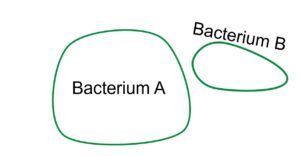
It came inside.

It came in deeper and deeper.

Then it snapped off.

And one mitochondrion was born!

This is what happened around 2 billion years ago.
This is why mitochondria have double membranes.
The same story can explain why chloroplasts in plants have double membranes.
Now, can the same story explain why the nucleus of a eukaryotic cell is enveloped by double membranes?
Did the nucleus also come from outside the cell in ancient times?
I think NO.
The nucleus contains the genomic DNA.
“Genomic DNA” is the entire blueprint of the cell.
So, it is difficult to imagine that this genomic DNA came from outside the cell.
That is why I have always wondered why the nuclear membrane is double.
The Lipid Bilayer is Two-Dimensional Liquid
The second preface is about the amazing softness of the Lipid Bilayer.
Please note that the “Lipid Bilayer” is not the same as the “Double Membrane” enveloping the nucleus, which is the theme of this article.
The lipid bilayer is a “single” membrane made up of two layers of phospholipids like this.

The double membrane enveloping the nucleus is made up of two layers of this lipid bilayer.
The single phospholipid molecule has a shape like this.
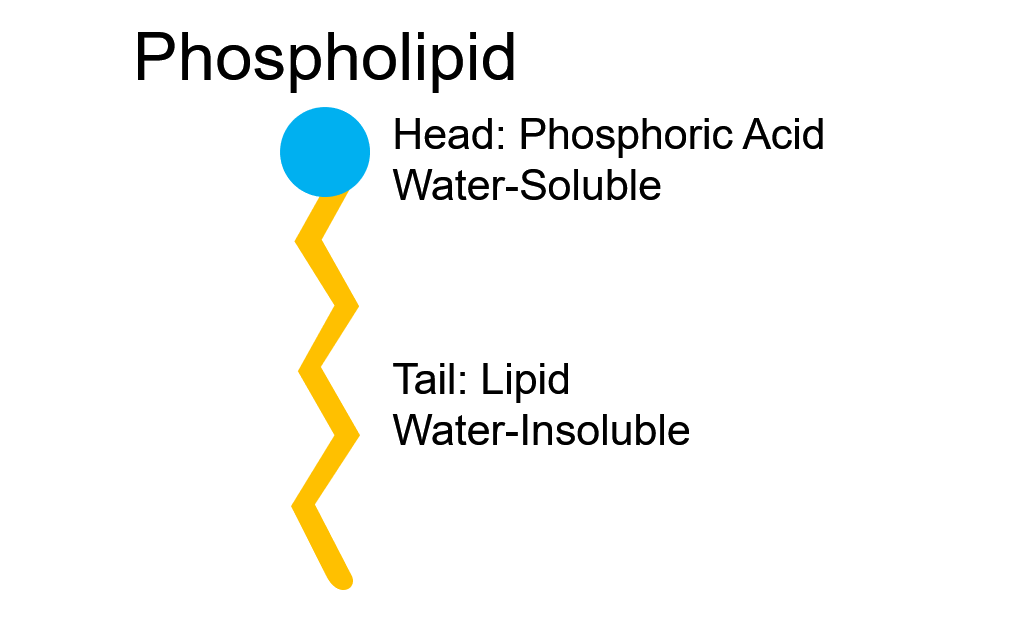
When these phospholipids are dissolved in water at a certain concentration or higher, the water-soluble parts are arranged to touch the water, while the water-insoluble parts are arranged not to touch the water. And then, they naturally form membranes in the water.

Since the phospholipids are arranged in two layers, this kind of membrane is called “Lipid Bilayer”.
This lipid bilayer naturally forms a pouch in water.
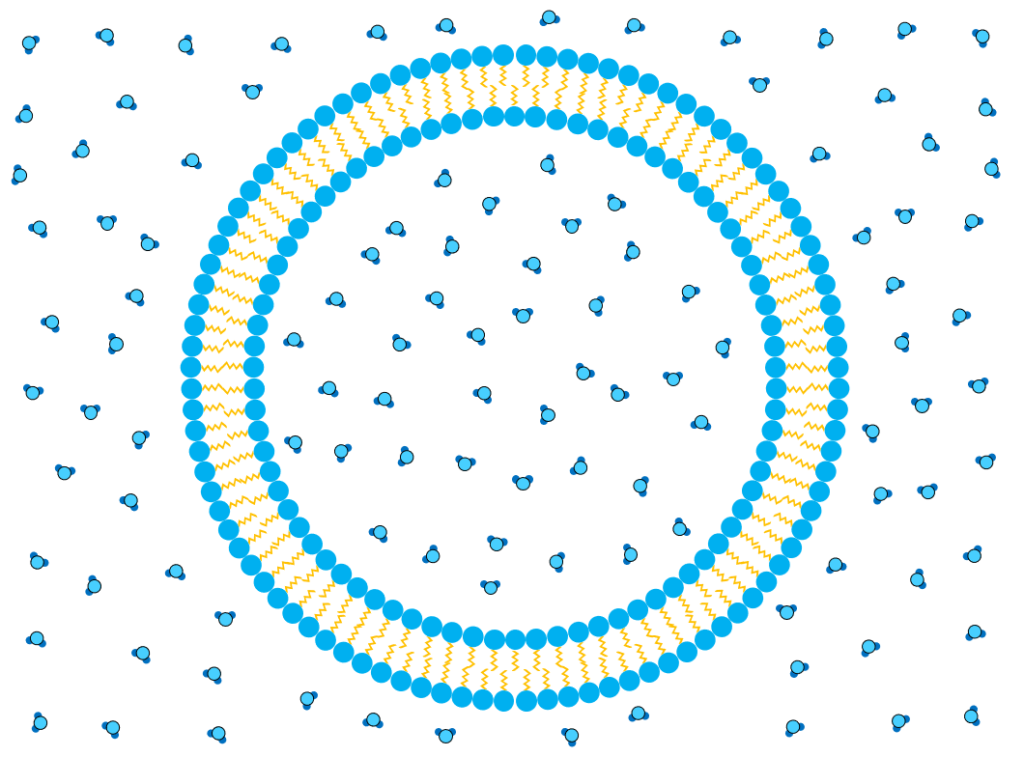
This is the very surface of our cells, the “Cell Membrane”.
In a lipid bilayer, phospholipids are not bound to each other. They are just arranged together. So, in fact, phospholipids are free to move around in the lipid bilayer and are in a two-dimensional Brownian motion.
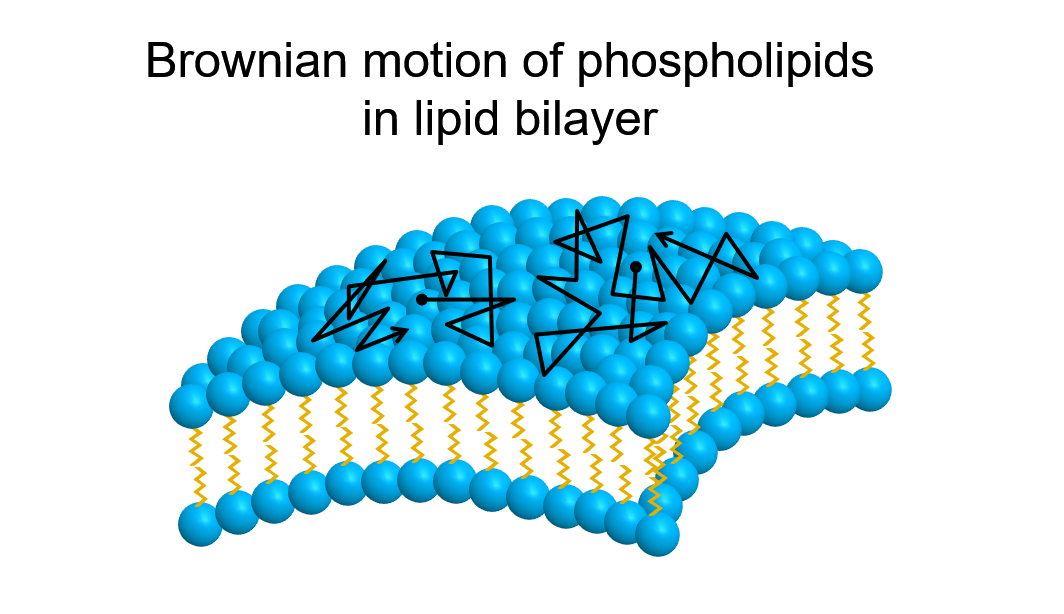
Brownian motion!?
It’ s just like a liquid, as the molecules are in Brownian motion.
That’s why lipid bilayer is also called “Two-Dimensional Liquid”.
It is very soft like liquid and can fuse and separate very freely.
For example, when small pouches of lipid bilayer gather at a certain density or higher…

Then the pouches touching each other will fuse together.
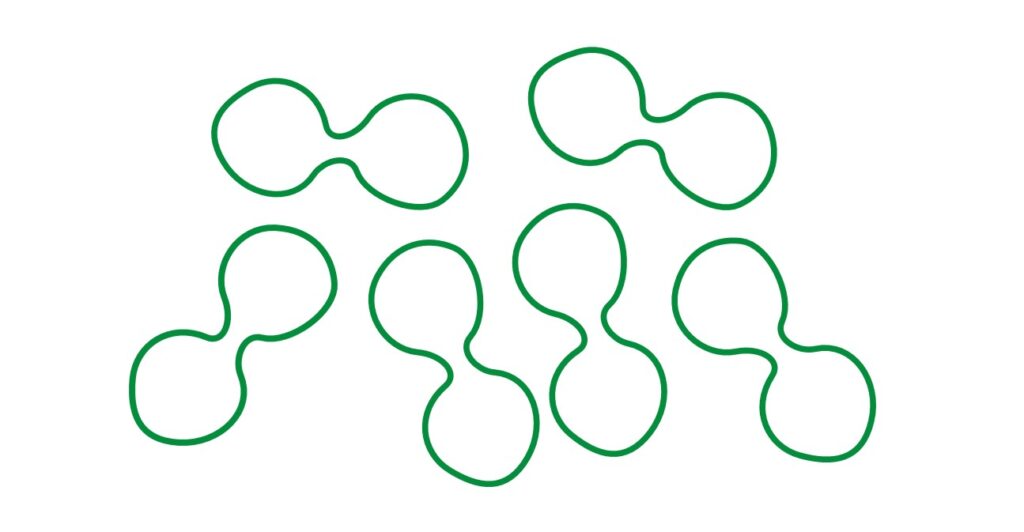
Have you ever taken oil drop floating on the surface of a soup and fused them together with the tip of a fork to form a larger one?
In a similar way, small pouches of lipid bilayers are also very flexible, and easily fused together.
Process of the Nuclear Membrane Development
Now here’s the main point.
I would like to write about what happened in the process of the birth of the nuclear membrane in a very simple way.
First, a large amount of phospholipids were synthesized around the genomic DNA. The phospholipids naturally aligned to form many small pouches. As a result, the genomic DNA was surrounded by small pouches of lipid bilayer

Then, these small pouches fused with each other around the genomic DNA…

At last, the genomic DNA was encased in a double lipid bilayer!!.
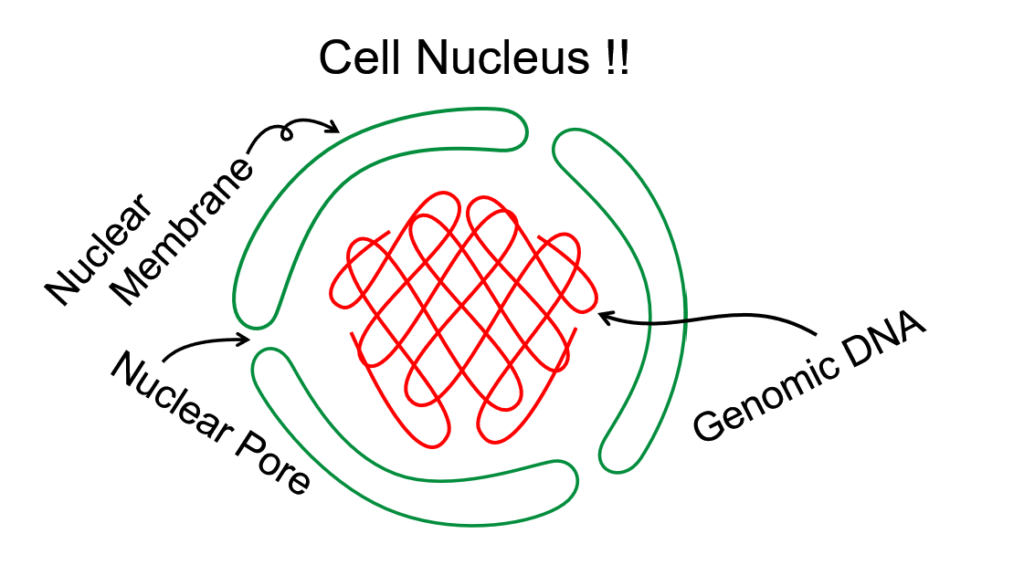
In this way, the reason why the nuclear membrane became a double membrane could be explained in a very natural way.
There is another important point in this hypothesis. Actually, the nuclear membrane has many pores called “Nuclear Pore”. The reason for the formation of these pores can also be naturally understood by thinking in the same way as above.
Concluding Thoughts
After thinking this way, the next question would be “Why was such a large amount of phospholipids synthesized around genomic DNA?”. I would like to write about this point another time.
In this article, I wrote about the process by which the nucleus came to be enveloped in a double membrane, focusing on the morphology.
I hope you enjoyed this.
Many thanks for reading to the end!
Have a nice day!